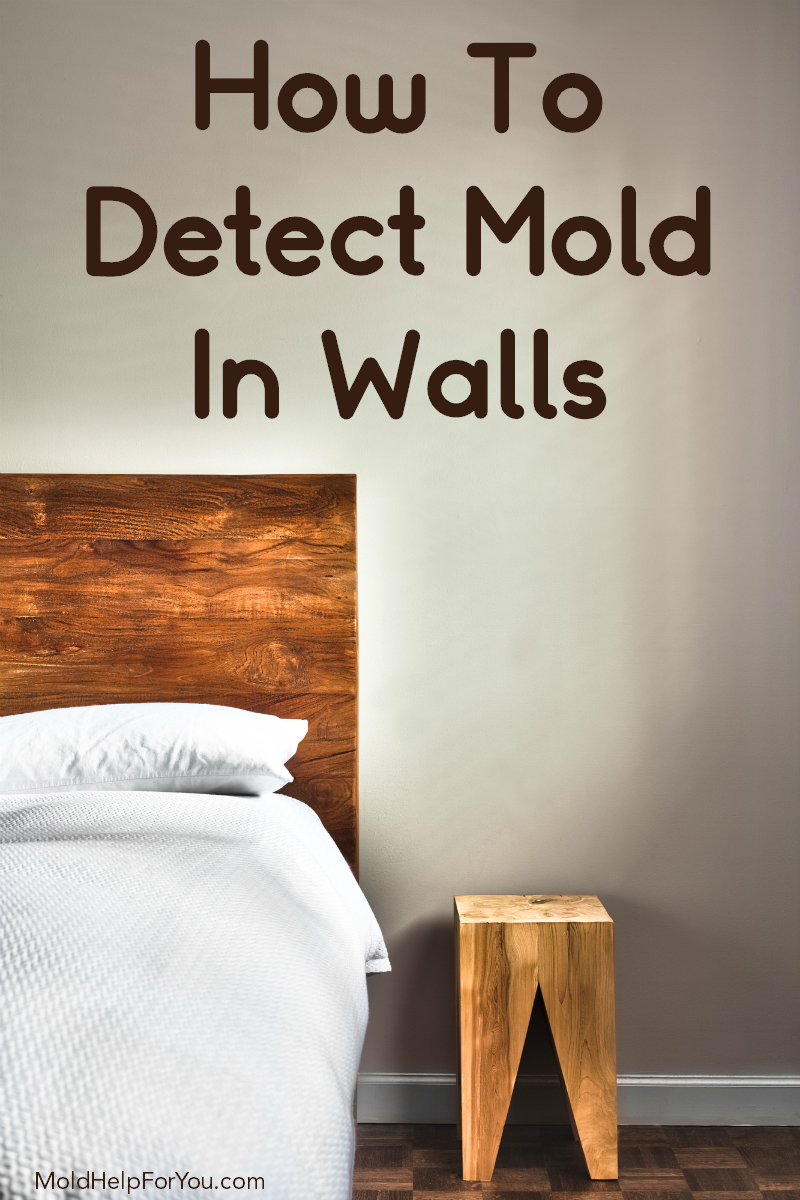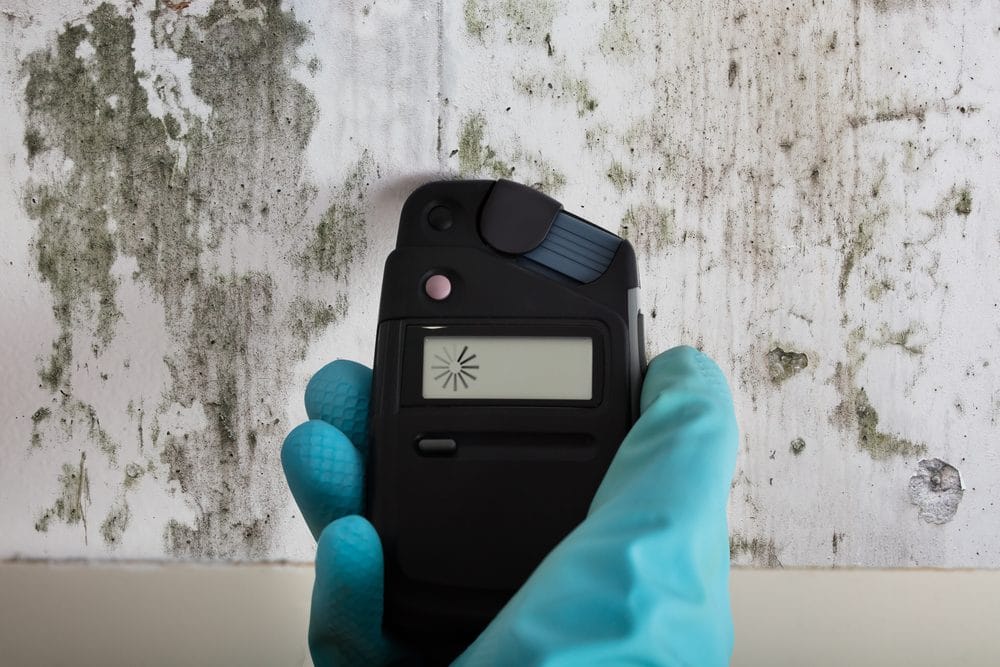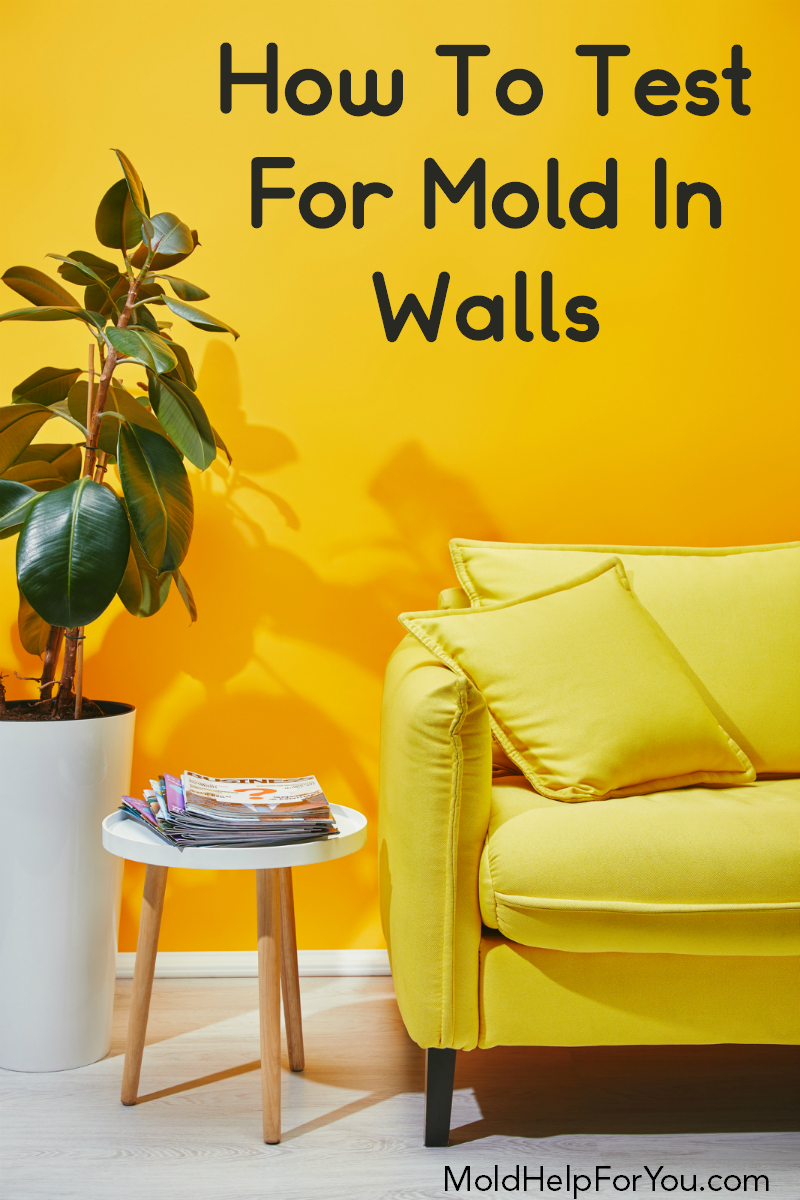How To Get Rid Of Mold In Walls
This post may contain affiliate links. Read our full disclosure.
You aren’t sure but you think you might have a mold issue somewhere in your home. The problem is, there is no visible mold. You don’t even have shower mold or toilet mold for that matter. So what might be going on?
When you suspect mold it very well might be that you have mold inside your walls. Mold in walls is something that is more common than you think for a variety of reasons.
Let’s take a look at how to find mold in walls as well the best mold removal options.

Signs Of Mold Inside Walls
Mold inside walls is one of the least likely places where you will notice a “sign.” It is the #1 place where mold hides undetected for long periods of time.
There are a few ways your home might show you a sign that you have mold behind a wall. These are:
- Although mold can smell like anything, there is a chance you may smell an odd odor in a specific area that was not present before. Most people report a musty smell that gets stronger in one area of the home.
- There are water stains or discoloration on the wall itself or the baseboards. These are usually yellow or brown in color.
- The wall or a portion of the wall feels cooler to the touch than the areas around it.
- The wall “weeps” with condensation.
- The wall has a discolored substance on it that many people mistake as splatters of cooking oil or something similar. I personally think it looks like little splatters of ear wax.
- Your wall may show a physical change. Paint or wallpaper can crack, peel, or bubble because of trapped moisture and subsequent mold growth. Your walls may become warped or even bulge. A lot of people mistake a wall bulge due to moisture as a nail bulge. Your walls may even begin to rot and crumble.
What Causes Mold In Walls?
Water. Water causes mold in walls. Let’s look at the most common ways it gets there.
- Building materials (specifically wood for framing) were either already moldy OR were installed wet.
- The house itself from not properly seated on the foundation which allowed rainwater, groundwater, and runoff to seep into the framing. (This is what happened to my house.)
- Windows and doors are not properly installed and sealed. Water is able to penetrate into the wall cavity.
- Water intrusion from outside coming into your wall from rain or irrigation due to stucco, siding, etc… on an exterior wall that’s compromised.
- A roof leak that runs into your home and behind a wall.
- Pipes and plumbing connections fail and leak. Usually you will discover a burst pipe rather quickly. It is the slow water leaks that are the main culprit when plumbing failures cause mold in walls.
- Wastewater line / sewer drain line has a slow leak.
- Air conditioning condensation line breaks inside the wall.
- Toilet overflows, bathtub overflows, washing machine overflows, hot water heater breaks, or any other accumulation of a large amount of water in your home that ISN’T dried out promptly and completely.
How Long Does It Take For Mold To Spread In Walls?
Mold can grow within 48 hours of finding water and a food source. From there is can spread at any rate depending on the type of mold. Some mold grows slowly and other types of mold grow rapidly. Mold will continue to eat away at building materials and increase damage as it spreads.
Is Mold Behind A Wall Dangerous?
Yes. Absolutely yes. In fact, it can be MORE dangerous than visible mold because it can go undetected for a long time, continue to grow and compromise multiple areas of your home, and it can release mass amounts of mycotoxins as the active mold growth begins to compete for space. In addition, the mold spores and mycotoxins can quietly move through your duct work and invade all areas of your living space. Mold is known to cause a wide range of health problems and mold behind a wall is no different than visible mold elsewhere in your home.
How To Detect Mold In Walls
Figuring out if you have mold inside your wall and even what wall might have a mold problem is no easy task. Unfortunately, there are not a lot of accurate DIY options. The closest you can get to finding mold behind your walls is checking for moisture. More in depth exploration is better left to a professional mold inspector.
So what can you do to decide whether or not to hire a mold inspector?
First, you can use a moisture meter like this one to check for moisture inside your wall. (I have an entire post on moisture meters and strongly suggest you read that so you choose the best moisture meter for your situation). If you have ANY moisture, there is a strong likelihood that there is mold growing. Having said that, humidity levels in your home could play a role in moisture readings. So again, read my article on moisture meters.

You can also purchase a thermo imaging device to detect temperature changes behind your wall. Again, this will tell you if there is moisture but does not show mold. My post on thermo imaging cameras tells you everything you need to know about which ones to purchase and how to use them correctly.
You can use these test plates to conduct a preliminary check for mold spores on the wall. Often times if there is mold in the wall, there will be mold spores on the wall in your home. Since they aren’t actively growing, you won’t actually be able to see them. You want to very gently place the test plate against the wall in several places. Put the lid on and label it so you know where the sample came from. Wrap it in aluminum foil and put it in a room temperature spot for 5 days. After 5 days carefully remove the foil and see if any mold growth has occurred. This isn’t 100% conclusive but if you have mold growth it is likely there is mold inside your walls. No mold growth doesn’t necessarily mean you are in the clear.
You can run an ERMI test to check the overall mold levels in your home. Elevated readings with no visible mold may indicate a mold problem in your walls. You can learn more about the ERMI here.
Here’s the catch…If you find moisture or if you have mold growth from the plate tests or ERMI tests, you will still want to consult with a professional mold inspector. You may be able to skip right to the mold remediation process. Or you may need a more detailed inspection.
You likely will still need to hire a professional mold inspector if you suspect you have mold in walls but can’t “find” it with the methods above or don’t have any obvious signs of water damage. This person is trained to find hidden mold with tools the average homeowner does not have available to them.
One thing you DON’T want to do is to start opening up walls and checking for mold unless you are properly containing the area and running high powered air exchange HEPA purifiers. You want to leave that to a remediation company.
How To Remove Mold Behind Walls
A lot of people falsely believe that killing mold inside walls is an easy process. It’s not. This is NOT a DIY activity. One wrong move and you run the risk of contaminating your entire home and all of your belongings. It is better to spend the money and allow a professional to properly remediate the area than trying to do it yourself and causing a larger, more expensive problem.
When it come to mold, you want to do it right. That means opening up walls, removing the moldy building materials and replacing it with new building materials. Specifically, porous materials such as sheetrock and insulation should be replaced. Even though the sheetrock and insulation may appear to be OK, it is likely that mold spores are still present and the mold may continue to grow even if you follow a treatment of black mold inside walls. It also means treating the areas around it with products like EC3 and Endurance Bio Barrier to tackle any rogue mold spores and mycotoxins and prevent mold in the future.
Mold in walls is one of the more complicated mold scenarios but certainly one that can be handled. Please reach out if you think you have mold hiding inside your walls. I offer phone consultations on the best steps to take for your individual situation.


I noticed a foul smell coming from our kitchen walls, and I fear it might be mold growth. I appreciate you letting us know that mold often emits a musty smell that gets stronger in one area of the home. I’ll be sure to contact mold damage services to solve the issue as soon as possible.
It’s helpful to know that if we have moisture inside our wall is most likely that we have mold too. I visited my brother’s house, and the moment I stepped inside, my allergies intensified. I’m very allergic to mold, so I’ll share your post with my brother right away. Thanks.
I would like to have a mold test done in my home.
I have mold at my house but I would love it to be inspected and confirmed
Thank you. Can you please recommend at remediation company that serves central Virginia? We are in a clean space and have found a wet area on a wall in a closet on the first floor. There are pipes within that wall and it appears that a pipe is burst and/or is leaking. But, I don’t want to get a plumber out here and open up that wall until I have proper containment in place and a remediation plan in place. Thank you.
Hello Allen,
This was the only company recommended by a couple of people in my professional network: https://central-virginia.pauldavis.com/